#great southern reef
Explore tagged Tumblr posts
Text

“Underwater Fireworks”
Shot in Mornington Peninsula, Australia.
“In the shallow waters of Naarm (Port Phillip Bay), sparse colonies of Tubular Hydroids poke their heads out of the sand in cold, shallow water. There are hundreds of individuals, but at just 4cm or so tall it's easy to dismiss these tiny animals which are endemic to the Great Southern Reef of Australia. Each individual here is either male or female and extend their outer tentacles to catch passing plankton.”
by Imogen Manins
Ocean Art 2023
#imogen manins#photographer#ocean art 2023#tubular hydroids#marine animal#animal#naarm#port phillip bay#mornington peninsula#australia#great southern reef#nature
17 notes
·
View notes
Text




great mayan mesoamerican barrier reef // caye caulker, belize // 2016 // ©
#my photos#oceancore#diving#snorkeling#scuba#coral reef#belize#mesoamerican reef#central america#caye caulker#beach life#ocean life#swimming#wildlife#original photographers#photographers on tumblr#travel#photooftheday#underwater#underwater photography#gopro#fish#stingray#southern stingray#great mayan reef#barrier reef#mesoamerica#marine biology
12 notes
·
View notes
Photo
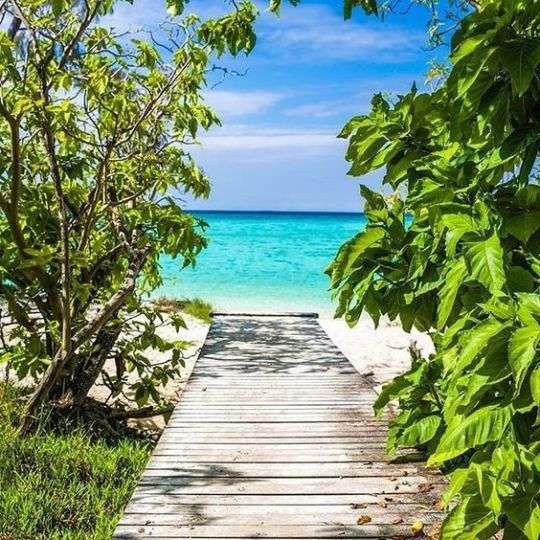
@heronisland by @theblondenomads
#heron island#great barrier reef#southern great barrier reef#queensland#australia#tropical#tropicalcore#jungle#junglecore
8 notes
·
View notes
Text

Christmas Time At Bondi Beach.









youtube
#funko#australia#australian#Christmas#xmas#holiday#land down under#southern hemisphere#ocean#sea#great barrier reef#Youtube
1 note
·
View note
Text

#Celebrating the Giant Kelp Forests of the Great Southern Reef#Today#GIF#AnimatedGIF#Animated GIF#Animation#GoogleDoodle#Google Doodle#google#doodle#GoggleDoddle#Photo
0 notes
Text
THREE ICONIC MUST-SEE WONDERS
The natural world is full of wonders that have captivated humans for centuries. From the towering mountains to the deep blue oceans, the Earth is a treasure trove of natural beauty and awe-inspiring phenomena. Its awesomeness can also be found in the starry night sky, exhibiting a rich uniqueness of twinkling stars. Some of these magnificent wonders are seen below:
THE GRAND CANYON
This is one of the most historical natural wonders of the world. The Grand Canyon is situated in Arizona, USA. A lot of us must have heard of the Grand Canyon, with some wondering what it is. Well, let’s start by defining a Canyon. A canyon is a deep narrow valley with steep sides. It is usually accompanied by a river flowing through it. Now that we’ve gotten that cleared up, you’ll probably be wondering why it’s called the Grand Canyon. It is called the Grand Canyon because of its immense size and grandeur.
BRIEF HISTORY: The name "Grand Canyon" was coined by a one-armed civil veteran, John Wesley Powell in 1871. The Grand Canyon was formed as a result of tectonic activities. It was carved out millions of ago by ....
To continue reading, clickhttps://geographikworld.wordpress.com/2023/10/22/wonders-of-the-natural-world/
#Wonders of the world#Grandcanyon#great barrier reef#Aurora#Nothern lights#Southern lights#aurora autstralis#aurora borealis
0 notes
Text
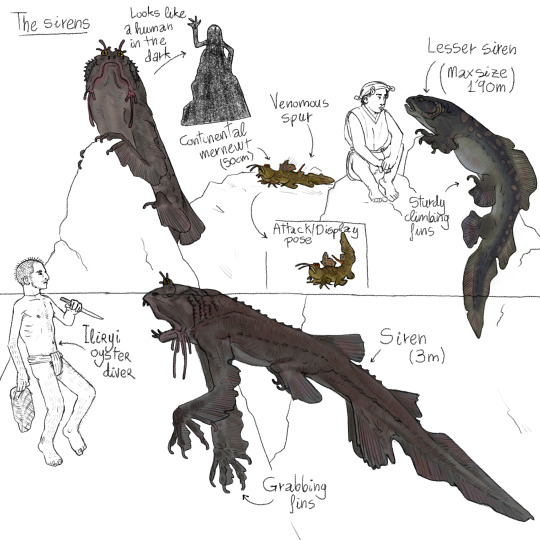
Sirens of Encounters in the Frontier.
In my setting, sirens are a kind of shark, descendants of a creature most similar to an epaulette shark, wich adapted to hunt fish and mollusks trapped during the low tide and eventually evolved to be fully lunged and mostly amphibian.
There are 3 species of sirens, all 6 limbed.
-The continental mernewt is native to the vast beaches and coral reefs of the southeastern coast of the continent. It's similar in bodyplan to a mudskipper and just as agile. They have jaws strong enough to open shellfish and don a venomous spur next to their tail fin, wich can kill small animals and cause pain, swelling and even necrosis of the limbs in larger animals like humans.
Male mernewts are known to "fence" each other as they are very territorial during mating season. This fights envolve leaps into the air, stabbing with their spurs, biting and their characteristic shriek.
These animals are very important in the culture of the warrior caste in the Sun Empire and represent masculine violence and war, sometimes positively (they are kept in artificial ponds ocasionally) or as a critique in poetry of the futility of war, since the mernewts are vulnerable to birds of prey or other predators while exhausted after a fight.
-The lesser siren is the most terrestrial of all sirens. Its native to the eastern and southern coast of the continent, the north of alwaysummer and the Twisted Islands.
These creatures feed mostly on fish stranded during low tides but many hunt seabirds by staying still between rocks in the shore until the perfect ocasion to leap and catch its prey with their clawed pectoral fins. They usually drag their prey to the water and drown it there. They are very capable of climbing rocks and can be quite fast in short bursts of speed.
They can get quite large and pose a significant danger to some cattle and humans.
-Sirens are native to the Twisted Islands and are the most aquatic of the three, even though they can still return to the sea if they get stranded.
They spend most of the day in underwater caves and are actually quite good at hunting in the sea floor, as they use their long arm like pectoral fins to move rocks and expose mollusks and other small prey. Still, their prey of choice are terrestrial animals. Sirens are indeed quite intelligent animals, though far from sapient, as they resemble the intelect of a marine crocodile, wich manifests in very specialiced hunting tactics.
They have learned to attract land animals close enough to the water by leaving small pieces of fish in the shore as bait for seabirds or imitating animal cries for help to attract unsuspecting predators or worried members of the imitated species. When they get the chance, they rapidly extend their arm-like fins and drag the animal to the sea.
Some sirens have specialiced in hunting humans, specially those on boats, wich is a big problem given how common reed boats and low canoes are for transport in the twisted islands, often used to also transport cattle.
Sirens can easily climb on top of these boats or colaborate between many to topple a ship.
They don't hunt in organized groups, rather they all hunt individually but at the same time, if that makes sense, and later fight for the prey.
These human eating sirens have learn to stand on small islands or unlit shores ar night and waive their arm-like fins while screaming (they can imitate a great variety of sounds) to lure humans closer to them.
The Iliryi people (those native of the twisted islands) have developed many methods to sail safely, such as covering their boats with down facing spikes, tying themselves to the boat or just carrying harpoons and being ready for action. Still, these tactics are not very efective when overwhelmed by a large group of sirens.
The government of the twisted islands hires whalers and fishermen from all across the eastern sea during their low season to work as sirens hunters, wich escort other ships and keep the siren population at bay. This is a high risk high reward job for these fishermen.
#fantasy worldbuilding#spec evo#worldbuilding#creature design#fantasy art#spec bio#art#concept art#fantasy#siren#mermaid#merman#mermen#enconters in the Frontier#my art#my artwork#original species#original art#twisted islands
1K notes
·
View notes
Text
Lemon shark, Heron Island, Queensland: This lemon shark gets a thorough clean from its hygienist, the remora, removing leftover food and pesky parasites from its mouth.. under sea in Heron Island.. Heron Island is a coral cay located near the Tropic of Capricorn in the southern Great Barrier Reef. It is 87 kilometres north-east of Gladstone, Queensland, Australia, and 460 km north-north-west of the state capital Brisbane. Wikipedia
#Lemon shark#Dental check-up#Remora Fish#Heron Island#Coral Cay#Tropic of Capricorn#Great Barrier Reef#Queensland#australia#oceania#oceania continent
389 notes
·
View notes
Text
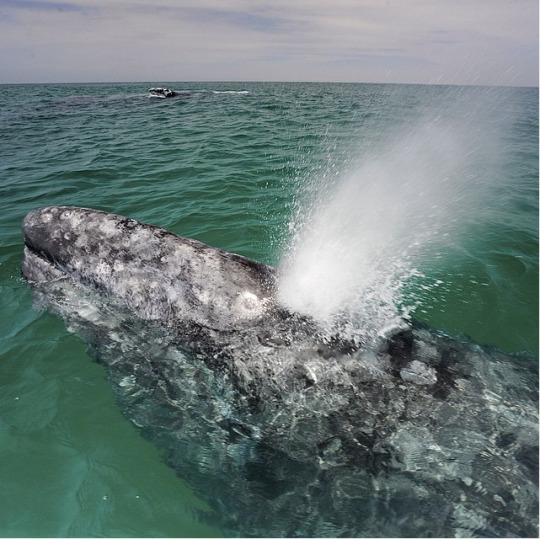
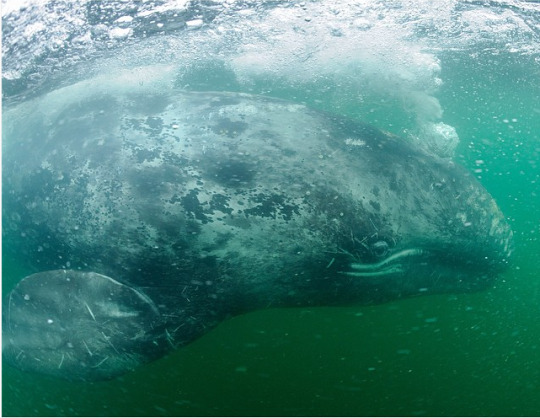
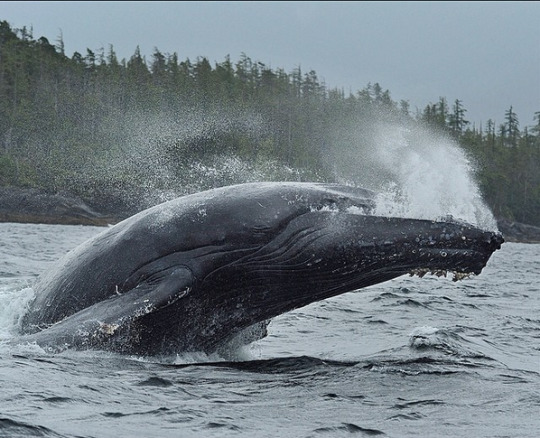
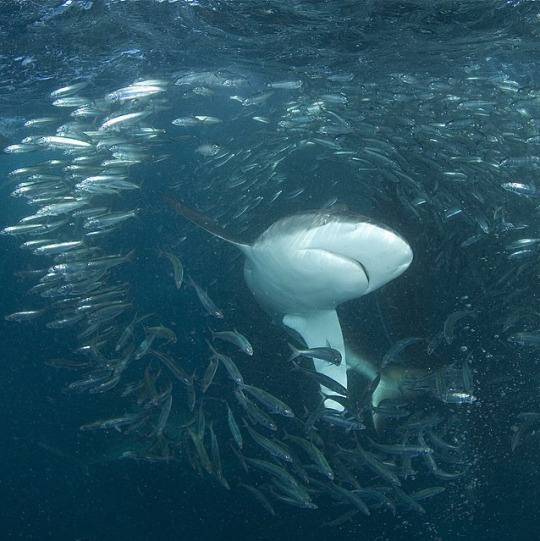
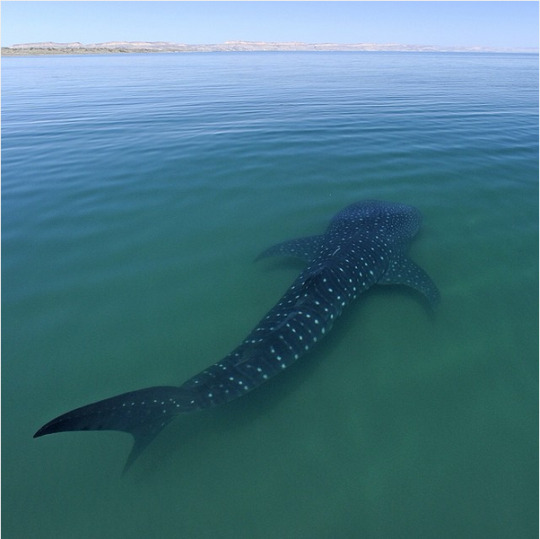
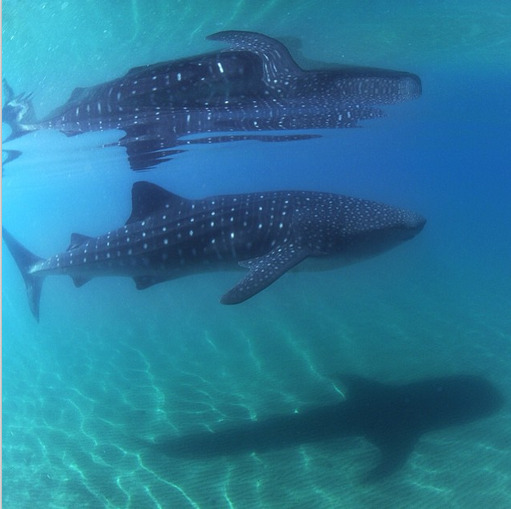
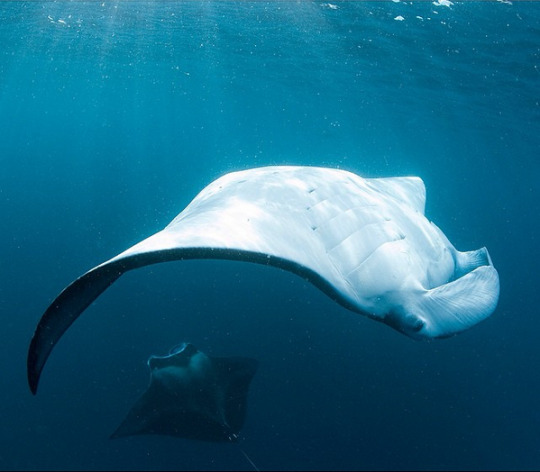
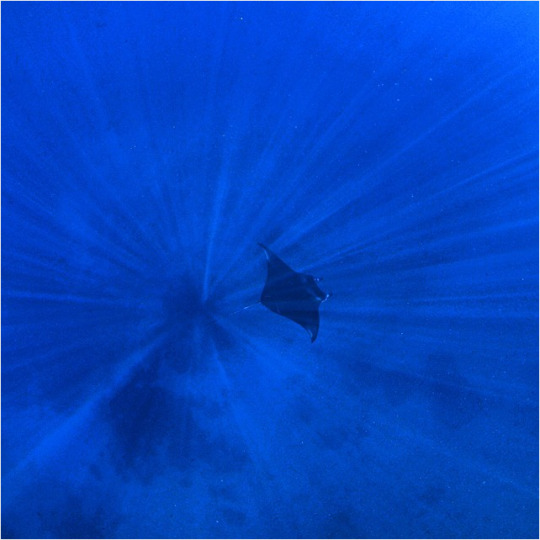
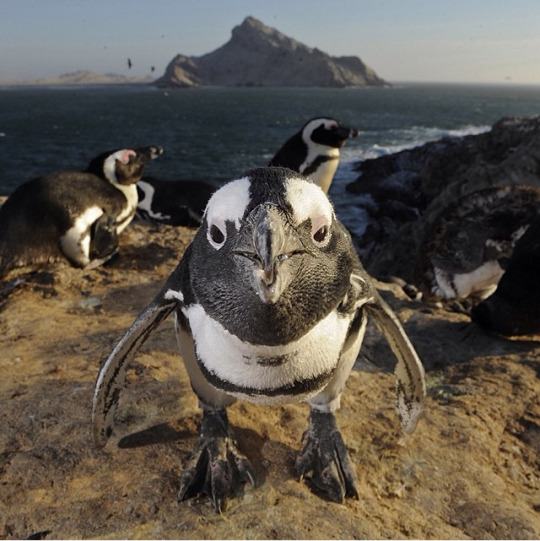
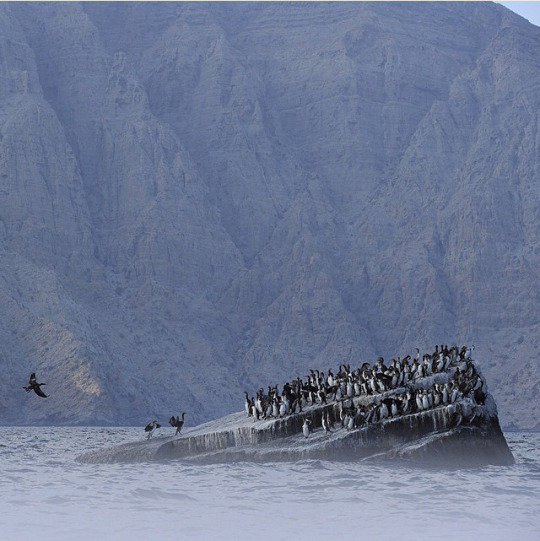
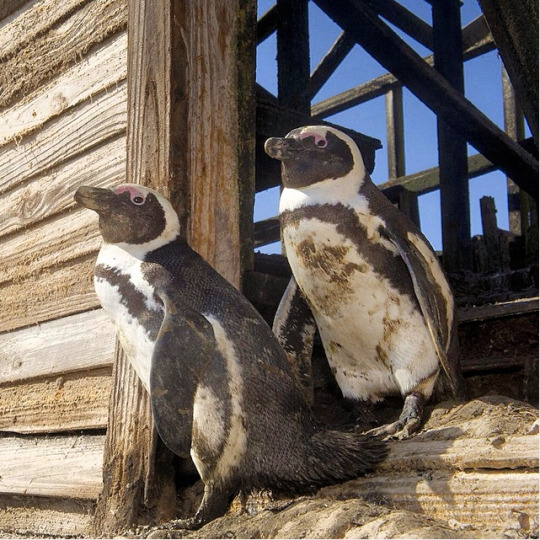
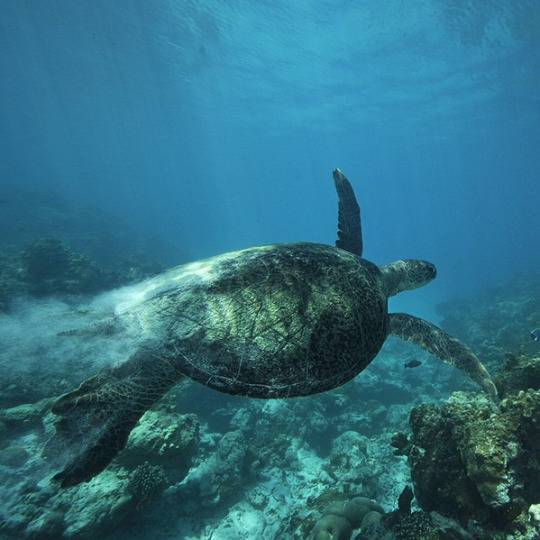
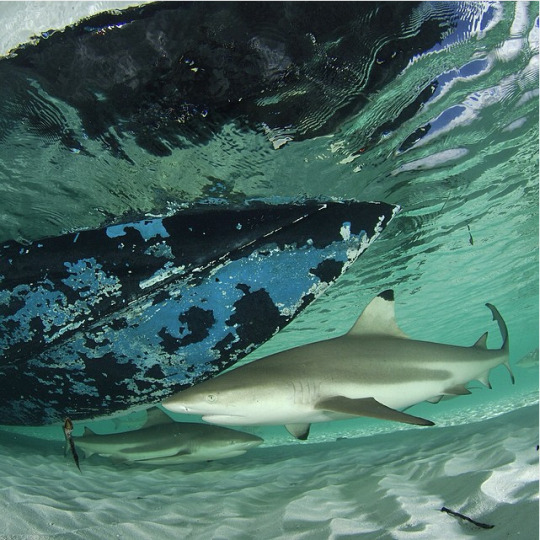
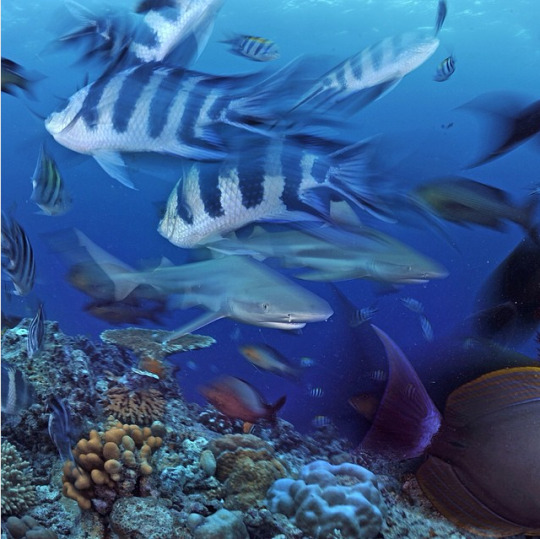
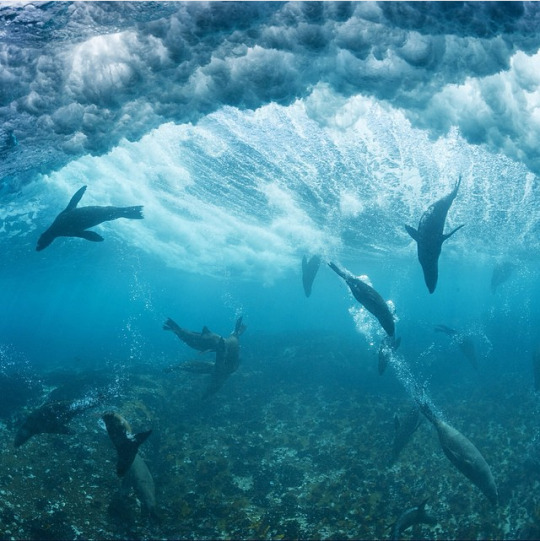
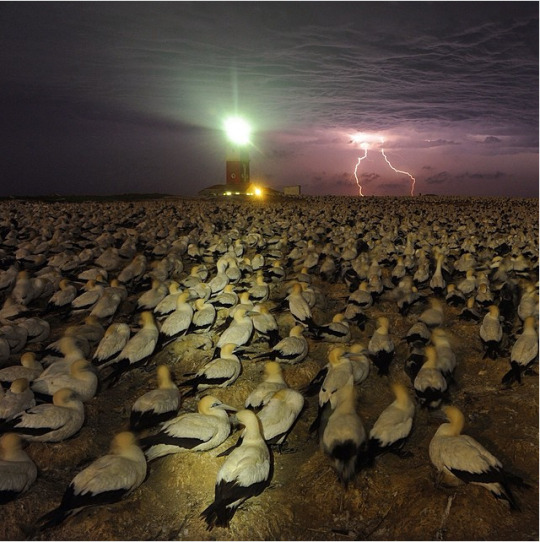
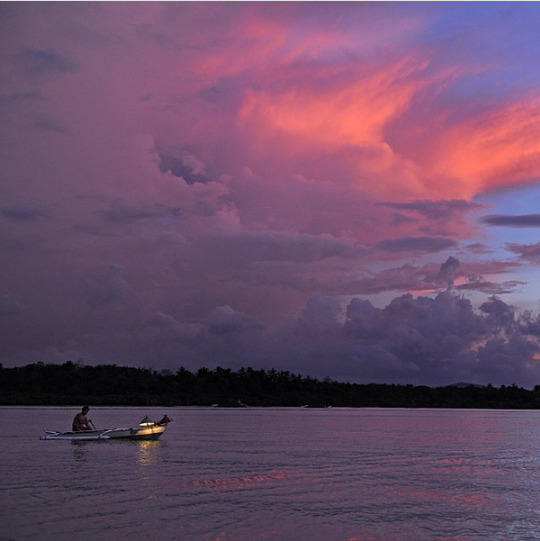
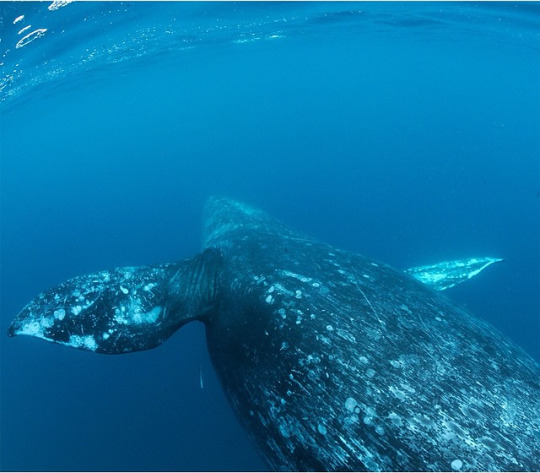

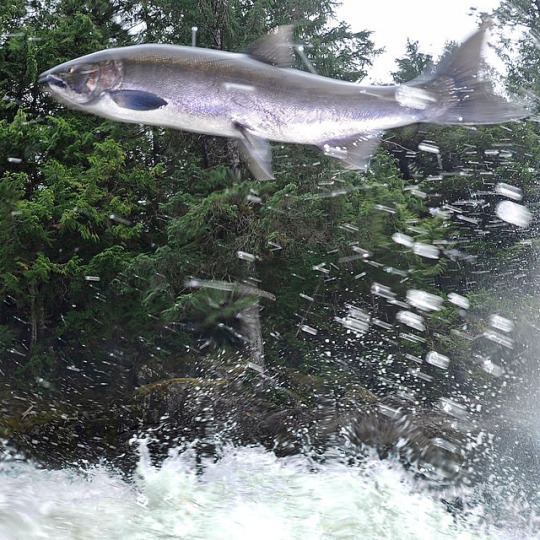
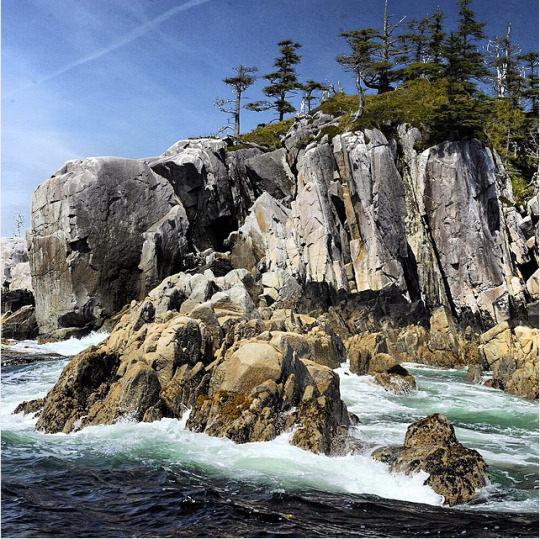
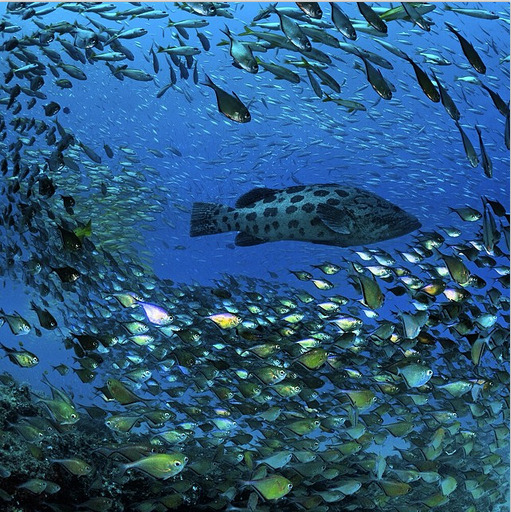
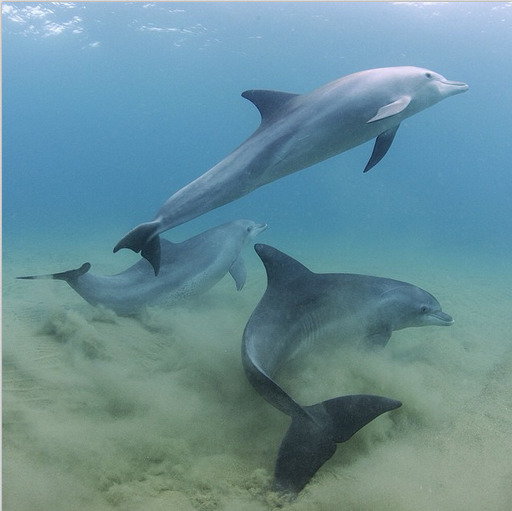
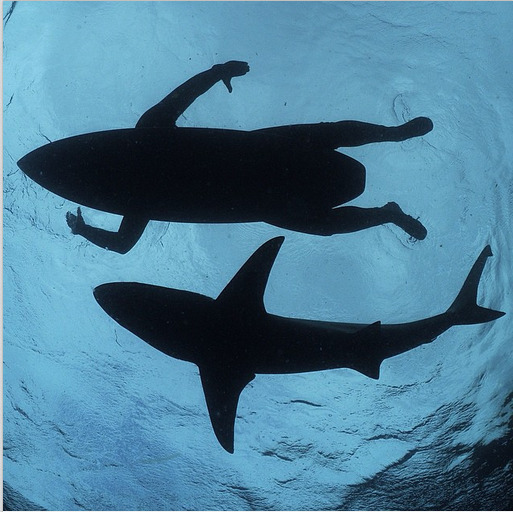
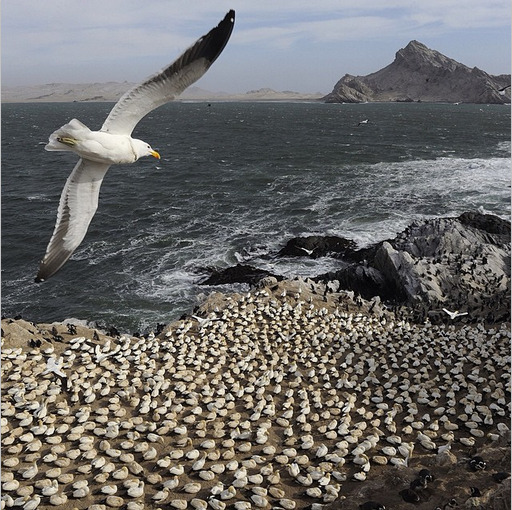
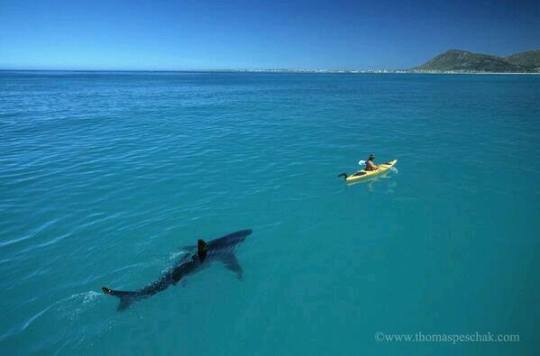
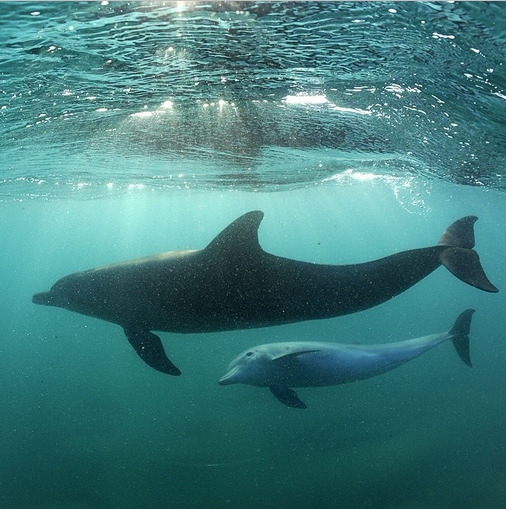
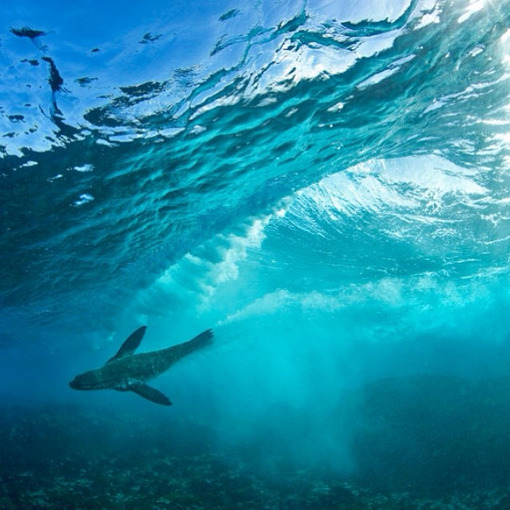
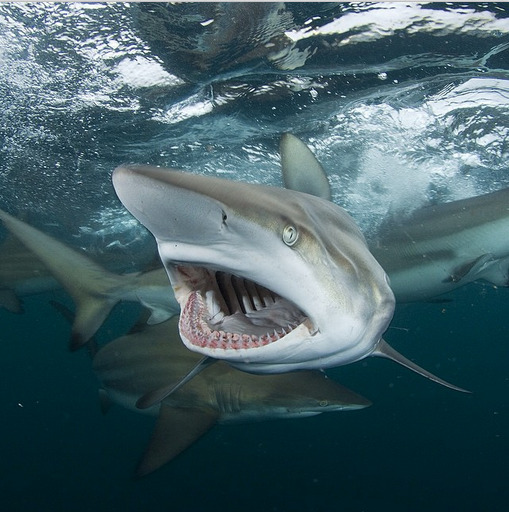
Photos and texts: @thomaspeschak
1-. A curious gray whale exhales almost directly into my camera
2-. A curious juvenile gray whale vigorously exhales and speeds past my camera in Mexico's San Ignacio Lagoon
3-. A Humpback whales breaches in the North Pacific Ocean off Canada's Great Bear Rainforest
4-. A dusky shark charges through a baitball of sardines
5-. y 6-. A whale sharks swins in shallow water in La Paz Bay, Baja California Sur
7-. A reef manta ray feeds on a plankton patch by barrel rolling over and over again in the same spot, not unlike a puppy chasings its own tail
8-. A reef manta ray feeds along the drop off at D'Arros Island an St. Joseph Atoll. Seychelles
9-. African peguins
10-. A endemic Socotra cormorant comes in to land on a roosting rock deep within the Fjords of Oman's Musandam Peninsula (2012)
11-. African peguins shelter and nest in decaying building long abandoned b the guano industry on Namibia's Halifax Island
12-. At Aldabra atoll green sea turtles often rest for hours on the sandy seabed between coral outcrops
13-. Blacktip reef sharks inspect the hull of our boat on Aldabra's tidal flats. Seychelles
14-. Blacktip reef sharks patrol the drop off where D'Arros Island's coral reef descendes into deeper water
15-. Cape fur seals surf Altantic swell in the Table Mountain Marine Protected Area
16-. Cape Gannet colony on Bird island bathed by lightening and the beam of the lighthouse
17-. The hunt begins at dusk and continuous deep into the night
18-. A curious gray whale swins upside down beneath our boat in Mexico's San Ignacio Lagoon
19-. A venomous lionfish hunts baitfish in Mozambique's Ponta do Ouro marine reserve, by @thomaspeschak
20-. A salmon leaps high into the air to clear a raging waterfall
21-. A wild rocky point just out into the North Pacific Ocean
22-. A large potato grouper hunts amongst schools of baitfish that seasonally drape southern Mozambique's reefs
23-. Dolphins of Indo pacific
216 notes
·
View notes
Text
tuesday again 3/4/2025
my desktop has Kicked It™️🫠 so this is shorter and worse bc it comes from my ailing phone. the tuesdaypost is generally a multi-tab multi-window affair and i completely forgot about the ten-image limit on mobile
listening
i bought this cd months and months ago to fill out the 8 items for $1 sale at my favorite religious thrift shop with the worst vibes, bc i saw the name and thought “oh i like the guy”. i was in fact thinking of nick cave. i would describe this as crunchier than nick cave. also janglier. my most deeply held american trait is that i am a sucker for a song about a road trip.
-
reading
i struck out with Fried Green Tomatoes At The Whistle Stop Cafe bc it made me desperately, desperately miss my maternal grandmother and we simply don’t have time for extra emotion this week.

bad news from the zone tumbleweeds i hated this one too. this is a fourth (!) 1997 printing of the 1992 novel by Claire McNab, Under the Southern Cross. 180p, it’s the same physical quality as all the other Naiad Press softcovers. i did not look up anything about Claire bc copying and pasting shit on my phone is horrendous: however, the frontispiece notes that she lives in LA “for love” and misses Australia. the draw and strong point of this book are the vivid and immersive descriptions of various tourist points down under by someone who really loves the country. it’s an effective travelogue!
The vast, forbidding Australian Outback… the grandeur of Ayers Rock… legendary Alice Springs… the Great Barrier Reef… the primal beauty of Cape Tribulation…
Two women, from different continents, with different values, collide with spectacular results… UNDER THE SOUTHERN CROSS.
American Lee Paynter has built her small travel agency into an international tour company. Brash, confident, openly lesbian, her great love is her business. Women? They’re to enjoy and let go.
Alexandra Findlay is pursuing a career in Australian tourism with quiet focus and determination, convinced that her career is the best she can hope for in her arid, closeted emotional existence.
Now Alex has been assigned to accompany Lee on the American woman’s visit Down Under, to win Lee’s company over to Australian tourism. Suddenly Alex’s quiet life explodes… And Lee is challenged by a woman unlike any she has ever known.

there were a lot of components i did not enjoy about this book, but the actual construction and hitting what felt like what the next emotional beat in a relationship Should be was there. nobody said anything outlandish and nobody’s crotches were engorged. the first lesbian romance in this project ive read in first person.
i find it extremely funny when someone is in a gorgeous location and having a fucking miserable time. just seething in competitive rage. alex at one point states that her family will never forgive her if she comes out and lee goes “oh? you’re super close with them?” and alex has to go “😠 no 😠”. their relationship is at its best when lee is like “you know you don’t have to live like this?” and kind of mentally drop-kicks alex into enjoying herself. unfortunately these moments are few and far between.
i mostly hated this book bc i hated alex, but it was sort of fun (though not really what i personally read romances for) watching in horrified fascination for 180 pages as she sort of train-wrecked her way through the book. i HATE this kind of sanctimonious unpleasant gay. someone who is extremely pushy about your boundaries (lee doesn’t want anything serious and says so from hour one) but doesn't want to do any work at all on her own boundaries or emotional growth (in only one example, pitches a fucking fit at the airport after lee has been very firm about how she loves to fuck and had a great time with alex but doesn’t want anything serious). this is cutting a little too close to home bc this is nearly all baby (and a lot of grown/post college) western mass queers. i had enough of that in real life and enough roommates like that. i also don't typically enjoy the divorced woman discovering her latent lesbianism storyline. the coming out storyline deserves its own graf.
this book does a good job of portraying alex as believably prickly for her own reasons, and not just out of contrariness or to fit a trope. she was very badly scared by watching her lover get fired and her almost fired at her post divorce job! that makes sense! i wish the arguments for and against coming out that she comes up with for herself rang less true today! however, she doesn’t come out in the book as a big emotional gesture to join lee in scary freedom, she comes out to stop her boss hitting on her and to prevent her coworker from blackmailing her. her coming out is such a significant point of tension and happens with such a fizzle! I think I would be giving the book too much credit to agree and say that sometimes coming out isn't a big deal and is kind of a fizzle, be she is constantly thinking about how her first lover was fired for being a lesbian. it can happen to you!!!

there is a very contrived, unnatural ending that requires lee to betray all her most deeply held relationship beliefs/make a lot of bad decisions and a deus ex concussion for alex. not that i expect every book to be a Victorian morality fable, but i didn’t want her to have a happy ending that felt so unearned. I didn’t want her to be rewarded for being such a pushy bitch while doing zero work on herself!
at least the sex scenes were some of the less awful ones ive read in this project



-
watching
HOUSTON MENTIONED
youtube
-
playing
look at my beautiful little bitches
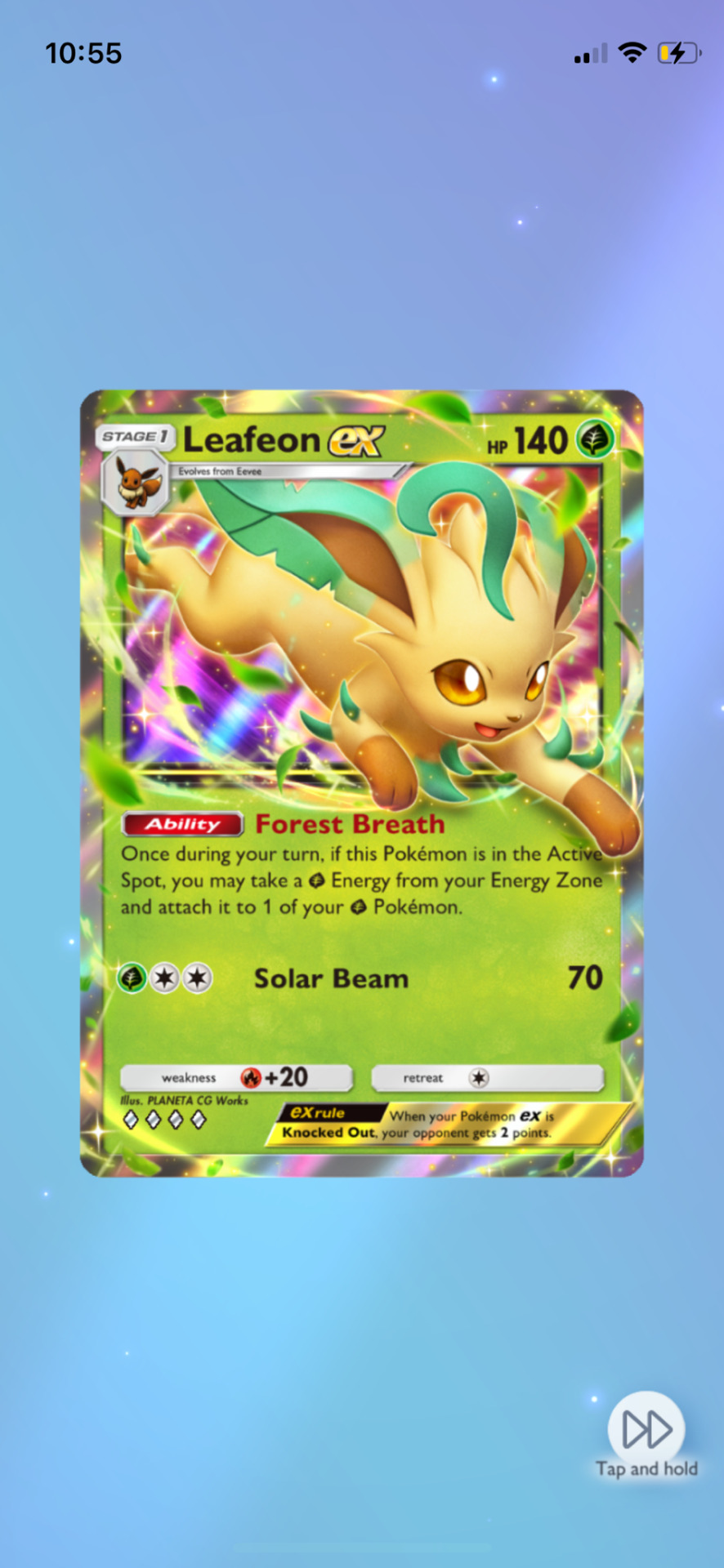
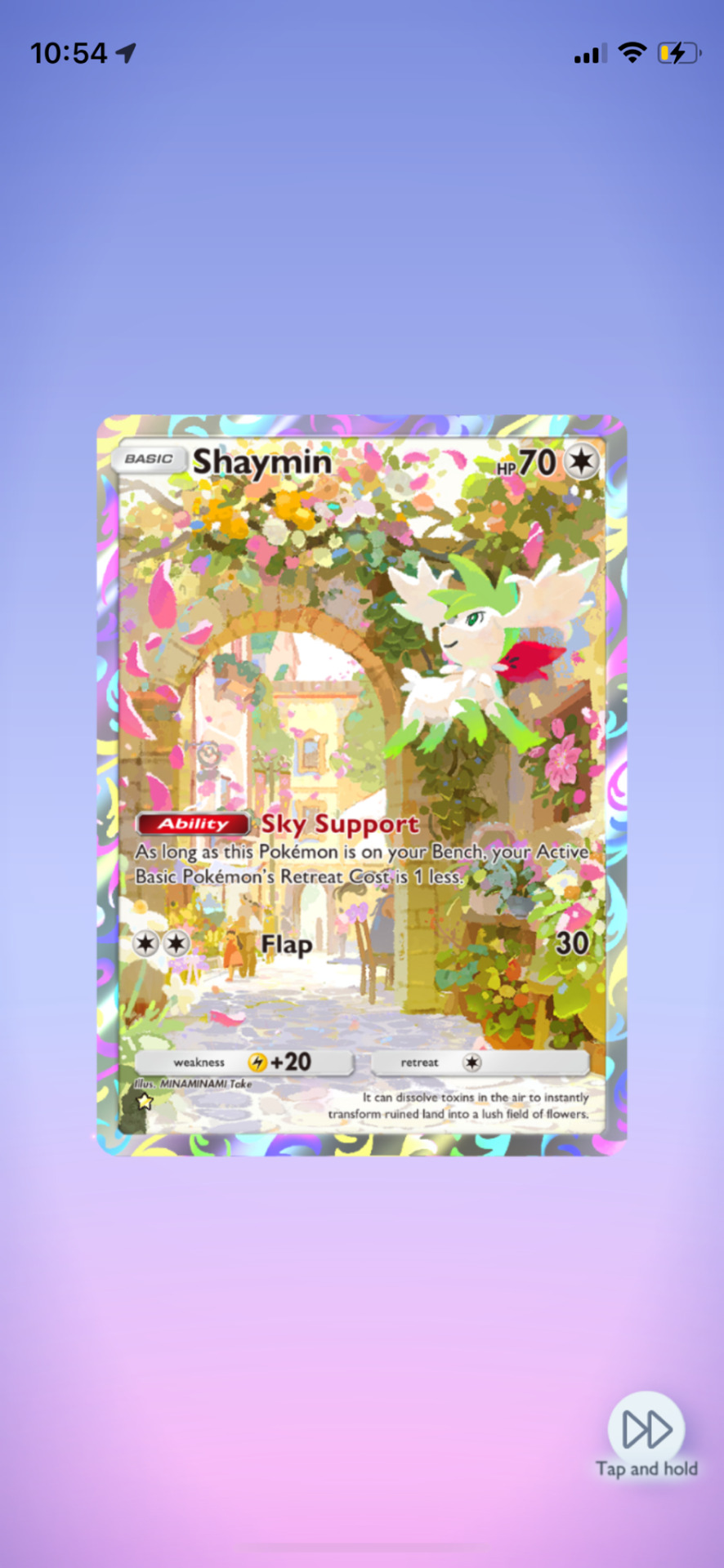
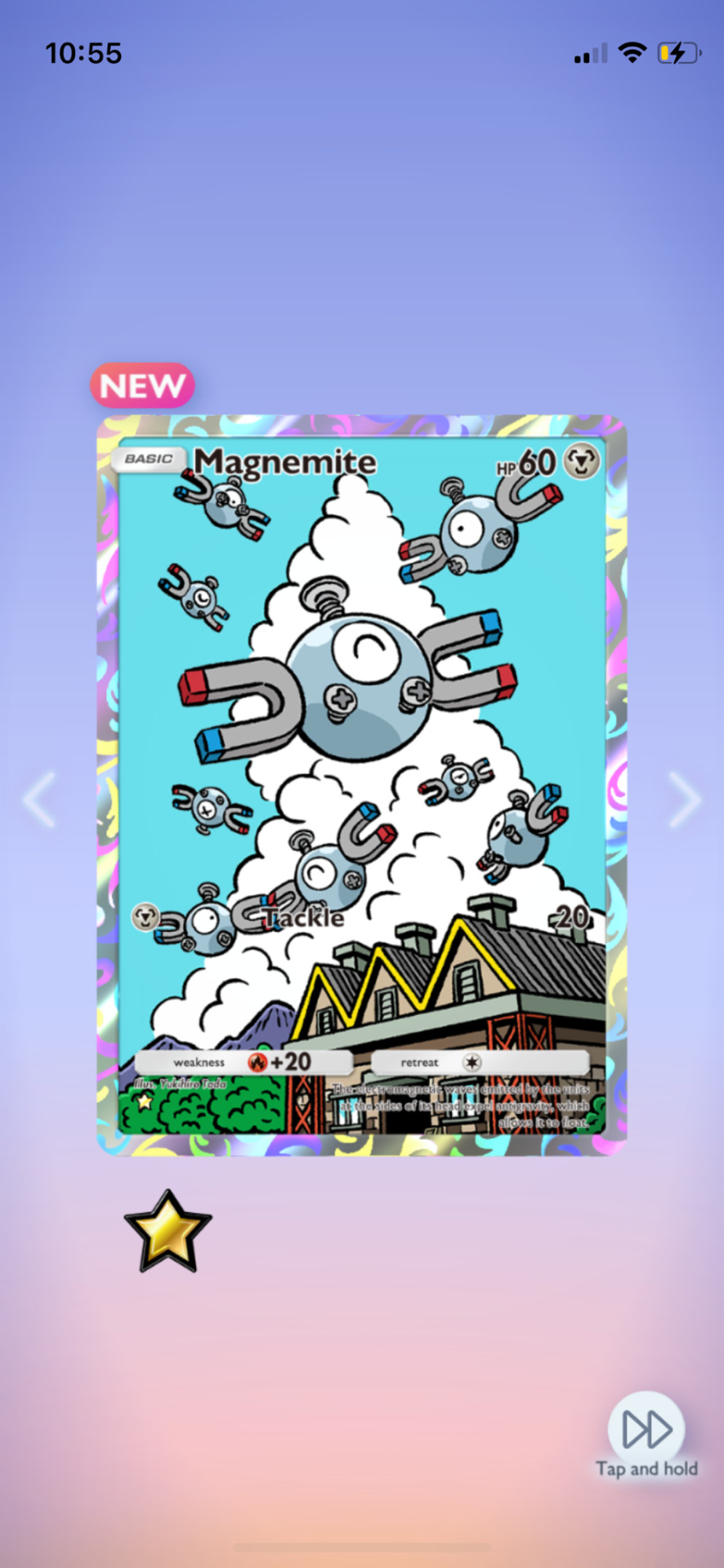
-
making
i am a firm believer that anything worth knitting is worth knitting well and as heirloom quality as you can make it, bc it takes the same amount of time to knit something in garbage single ply that will fall apart in one wash as it does to knit something in yarn that’s actually good. however, sometimes you need to produce an acrylic baby blanket bc a baby’s one job (as i have previously stated in this series) is to produce fluids and crumbs, and you love their parents and want to make their lives easier without adding a wool blanket to the mix.
this baby blanket is completed, only two years late. i did not measure this or even really unscrumple it before throwing it directly in the warsh. nineteen repeats across and twelve up of the tumbling blocks baby blanket, applied icord edging on the short edges which took six! total! hours! to apply. i think this yarn is bernat softee in mint? some sort of oil byproduct. phil is on my lap i cant find the band to check. i got very tired of this one and its 200 stitches across and am glad to see it out the door and to the tender graces of the toddler recipient. next on the docket is some socks for a grown person. i hope i still remember how to make socks.

29 notes
·
View notes
Text
The polar region
!This is quite big world building post of pure hyper fixation and murdered English be warned!
General geography
The polar region is located on the south of the globe, on one of the only two continents. Due to the axis of the planet it is covered in almost eternal night, which consequently causes there to be extremely cold and dark. However, the life conditions are surprisingly welcoming(not great or anything but enough to live) thanks to the high seismicity and volcanic activity of the area, which provides both of light and warmth essential for sustaining life. The region is the land of contrasts -snow, freezing cold water and boiling hot lava basically stands side by side. The continent, caressingly called Scylla or Jörmung, is made of two elements separated by inner sea. First part is the barrier reef made of basalts and volcanic glass. In walls of the barrier are located still active volcanoes keeping the area warm and snow free. It is believed that underneath the first few layers of the ring there is still living and breathing lava waiting to break free from the tough and stiff shell. The reef has only one passage through often referred as the throat. That's the only safe way to the inner part of the continent, unless you can sail well enough. The importance of this sea route is hard to even express, but it's enough to create in its name a special holiday known as "Iconmas". During the celebration locals hammer nails into the walls of the throat and hang the leather portraits of lost in the sea and their fautors as a memorial and sacrifice. The second element is the continent itself. It's covered almost entirety with glacier, only occasionally by the sea side you may experience the black rocky or sandy beaches. In the middle of the land there are few small mountain ranges made of sleeping volcanoes. These giants are the key elements of survival in these land as they are riverheads of the continent. It's activity both melts the ice creating warm rivers with fresh water and creates lava rivers which prevent from renewed freezing and provide light. This combination allows life to sprout in the harsh conditions of southern pole giving the beginning to small forests near rivers. The sea(it's technically a lagoon) separates both landmasses. It's might not be the deepest, the saltiest or the most tempestuous sea of the planet but still quite challenging to navigate on. The waters of the lagoon are quite warm around 10°C(for the place with no sunlight it's warm) and freezes only during coldest months of winter. The sea bottom is full of hydrothermal vents, rocky spikes of volcanic origin, icebergs and reefs which brings great danger to unprepared sailors.
Flora
The flora of the polar region is not very diverse but is made of exclusively endemic species. Climate, access to light and running water is highly limited which forced plants to lose many typical characteristics and develop brand new modifications. Everything to survive and thrive in it's own unique way. Common traits of local plants are small size, yellowish needles(etioplasts), and overall similar to the gymnospermea's wood and liber structure

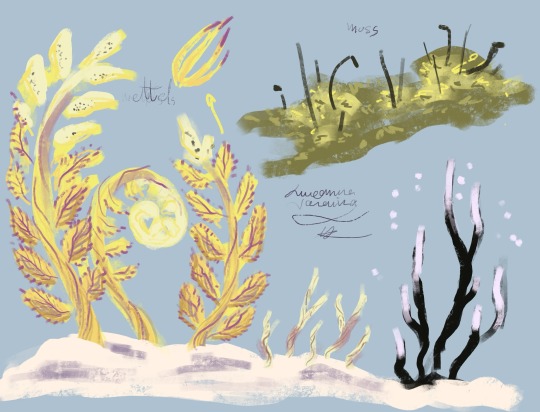
Most of the them are delicate herbs with long vernalization period, perennial plants and cryptogamic plants with wood like structures. Their needles and petals are usually covered in fuzz/pubescence and are quite searing in touch. These plants rearly blooms. The tiny weather window allowing plants to be pollinated and form fruits lasts only few weeks when sunlight reaches peaks of mountains. The fruits of these plants are usually eatable for witches, demons and titans and are rear source of vitamins and anthocyanins
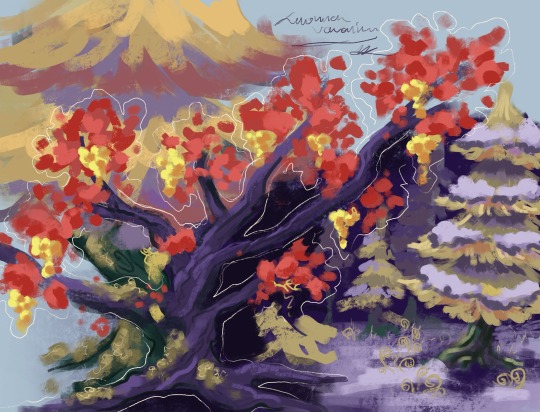

In the polar region there are only three types of trees. All grow in close distance from the rivers and eachother creating thick rotting system. Development of tough bark covered in wax and thermal pith allows them to survive the winter season while protecting from toxic fumes released by lava. These plants are not reliant on skylight or temperature and their blooming and fruition periods are regulated by phytohormones. The fruits resemble fruits of yew-tree. These plants are main source of plant base materials used by locals
Architecture
The architecture of the continent is highly influenced by the climate. The buildings are made to protect owners from cold, wind and snow. The structures are minimalistic, simple, often tall with strong fundaments, thick walls similar to fortresses and with little to none ornaments. Locals prefer the practicality and safety over the esthetic values when it comes to their homes and public buildings, especially since delicate decorations could quickly be destroyed by weather. Due to the constant darkness good lighting inside and outside the homes is crucial part of every structure. There is nothing more valuable in the land of the night than a tiny star guiding you through snow and halls

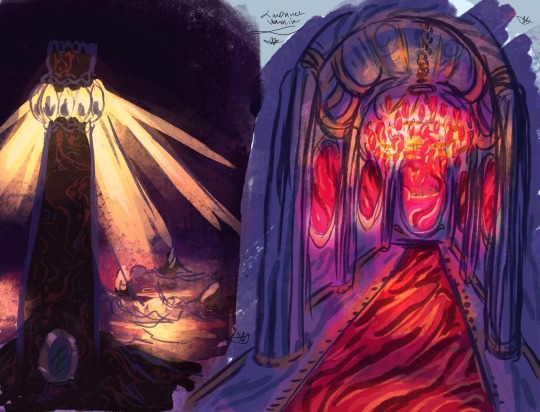

Titan's architecture is pure definition of the polar architecture style. Fortress , medieval like castles strong enough to withstand blizzards and storms. Tall and simple building towering over any other constructions nearby. They are located on remote island, hillsides of volcanoes or the barrier. The top storeys often has small stained windows as an only decorative element of the construction. The main entrance in comparison to usual open arch commonly found in architecture of other titans are replaced by heavy wooden gateway. Polar titans have very sensitive eyesight, adapted to the night vision, which results in very specific type of lighting inside their homes. All chandeliers, lamps and fireplaces emits reddish light, which is less irritating for their eyes. The effect is attained thanks to usage of special type of glass mixed with gold compounds and ambers imported from other isles. The most striking characteristic of the titan architecture is the main material they use. White fortress generated from their magic resembles in the composition titan bones. It's hard to not notice them from the afar. The contrast between black basalts, dark waters of ocean, slowly spilling lava and opal tower is impossible to miss. Unlikely demons and witches who need to collect materials, prepare and construct their homes. Process of building the titan's towers takes little to no time and effort, while achieving results beyond capabilities of any other species. After all it's hard to complete with a magic that could sprout out any life the titan could imagine

The witches architecture is much less impressive than titan's architecture. While titans style are monumental, making their buildings leaving passerbyes in awe, witches building are brutalist simple and raw. Made of the dark wood, stones, ceiling covered with the thick layer of moss and tiny windows facing alleys and paths. Heavy snow fall forces the construction to be placed higher in order to be capable of getting in or out. It resulted in creating "huts on hen's legs". These houses are very tight. Usually there are only 4 rooms connected with a big fireplace that heat, light and was used to cook food. Beds are usually built in special wardrobes that preserved warmth better. In harsh conditions where they happened to live individual villages without titans protection didn't exist or lasted longer than few years. The only choice are large towns usually located near ocean or river mouths. In order to fit the population on that limited area all architecture was forced to go up instead around. The huts of the cities were built in the way that creates layers of very tight located buildings connected with hanging wooden pavements and ladders. The status of a witch often is expressed by their house location and size: wealthier the witch taller their house is and nearer the main alleys it's built. The worst location to live were flood zones and areas near the forest wall
Residents
A bit of polar titans adaptation to their environment introduction:
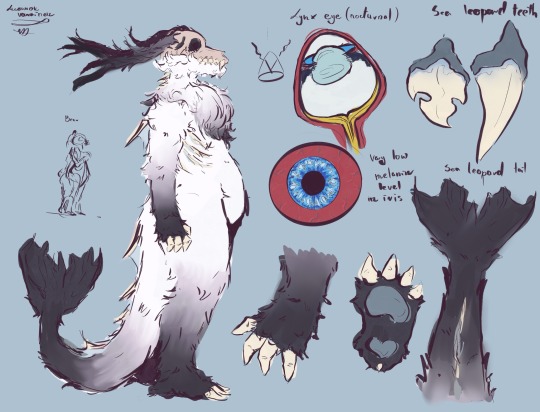
Polar titans are in many ways extremely similar to polar bears. Their fur works almost identical, has similar structure, colour, qualities, only skin instead of black is blue. Their eyes are adapted to the minimal amount of light it can catch, a few cones, plenty of rods. They're simply colourblind but with excellent night vision. Polars possess some marine animals features which are carry-over from the times when they were still nomads and usually travel by seas. Similar to our bears situation polar titans are statistical the biggest of all races. To be safe, warm, active and happy. Also the height difference between titans, witches and demons are the biggest in polar region as all three groups fit in very similar niche and extremely limited resources. Witches got a lot smaller and develop brown fat to keep existing, while titans become significantly bigger and fluffier
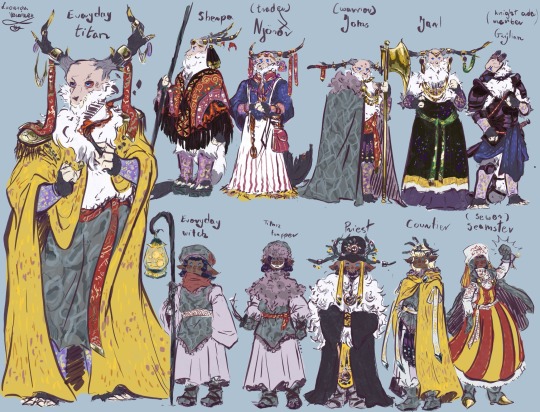
The society of the continent is quite hierarchical. Not only it's separated on the gods(titans) and their votary(witches and demons) but also statues (titan > demon > witches) witch can be traced back to magic predisposition. Similarly to all isles during that era. The species social structures have also their own hierarchy, professions and titles.
Titans all are on top-level in society, as gods creators of life and lords of sea there wasn't even discussion why. Usually they wear coats made of yellow needles of trees, "skirt" made of fine selkidomus's leather and as the typical element of titan's fashion embroidered ribbons engrained with red ink. Inside this group are separated smaller ones including:
Sherpas - tiny group of titans living on hillsides of the barrier reefs away from cities. They are guides of caravans when the throat is clogged or frozen and watchers of the sea. It is believed that they prevents great floods from hitting the capital and other towns. Sherpas also keep the flame of the lighthouse
Njörðr - traders who operates on the continental sea and around the continent(difference between quennian and them are the area they travel). Out of all groups the distance between them and votary is the smallest
Joms - skilled warriors who follows similar moral code as vikings used to. They believe that the highest honour is to die in the battle, which leads to their quite big percentage in mercenaries. In eyes of the local witches they would be treated like heros of epos and myths who fought monsters and new gods(unless they are not the one who invades)
Jarls- the true highest gods of the continent. They are the core of the city, the first and grand patrons of the towns. Their supervision allowed votary to gather and built everything from homes to harbours. All other groups of titans also falls under their protection and rule. Whole social, cultural, religious and political life is more or less tied with the jarl of the land. Often their birthday or death dates are celebrated like religious holidays
Grylian - members of the "knight" order, not much is known about them except they live in the most isolated island in the continent, chop their horns down and tie their muzzles. Sometimes witches reports seeing unknown boats, nothing like any local ones, stalking them while fishing. Local authorities usually does nothing with it. They know whose these boats are. If they are harmless and don't want any greater contact why to bother.The rumours spread around titans points that they might be form of a cult who believes in the old myth of witches predicting the end of the world
The witches of the continent have the the lowest status in the social hierarchy. Being generally quite delicate and often defensless with their tiny bilesacks in the world were strength and magic is to be or not to be is difficult. In exchange for the protection they offered their labour and fruits it. Witches of polar region are chubby-cheeked, fuzzy eraed and have greater night vision than others witches for different regions. They usually wear warm ushanka, long selkieskin vest , and few inner layers of robes. They always carry with themselves lanterns to safely navigate through woods, seas and city.
Seamster - a sewers are highly valued craftsmen. It's not uncommon to see these artisans being treated with the greatest honours, even better than many officials. Their bright colourful aprons are symbols of their profession and years of mastering the craft. Old diaries, from the times when gods wander around the world, says that witches supposedly gained the favours of titans by giving them sewer's masterworks. That could explain why out of all professions seamsters are adored so much
Courtier - small group of witches who live and serve titans in their homes. Scope of duties is quite wide but offers great benefits and better future for kids. You can always tell if the witch is a courtier or not by their hair - all of them have bleached hair. There is no rule to do so, but they at some point of history members of this group started to do so. Allegedly to resemble more gods their serve. Common fashion choices are also branches in hair and needle coat exactly the same titans wear on their daily routines
Priest - caretakers of temples. They organise all celebrations, plead blessings, prepare sacrifices, keep the shrines clean. Similarly to couriers they wear branches attached to their hats. Also priests wear coats made out of their gods fur, which are collected after ceremonial fur-cutting. Priests are prohibited from ever living the temple, to keep them inside they don't have shoes, gloves or real winter coats. Quite often thier toes are being broken which prevents them from walking away. It's believed that if a priest leaves their temple whole area will be cursed
Titan trapper - "anyone, young, old, rich, poor, courtier or fisherman can be member of the cult. They look exactly the same as any other witch, no special signs. Behaves, talks, moves, works normally. Only time when you can surely tell something is wrong is when they strike. When you fall asleep. They draw on their face these weird wide smiles and will try to stab you. I don't knows what this grin mean. It's creepy like they caught rabies or sth and now they out of thier minds. But somone heard them..." this would be the description of titan trapper made by a titan. It was the beginning of the horror, too early to understand or know anything. But the smile is just directed symbol of new gods, in pure darkness you can see only eyes and smile staring at you
It's not all but hit the limit of photos and will be a bit of continuation
#toh#the collector#the archivists#the owl house#toh the archivists#toh archivists#the collecter toh#toh titans#the collectors#the owl house titan#the titans#baby titans
25 notes
·
View notes
Text
Fish of the Day
Today's fish of the day is the Southern blue ring octopus!

The Southern blue ring octopus, also known by scientific name Hapalochlaena maculosa, is well known for how venomous they are, and the vivid colorations that warn of it! The Southern blue ring octopus is one of the four species of blue ring octopi on this earth, the Southern blue ring octopus in particular is the only lesser blue ring octopi, as opposed to the other greater octopi, which are smaller in size but have far larger blue rings when threatened. Despite the differences between the Southern blue ring and the other, greater blue ring, they all live in the same general area. With the entirety of their genus spread out across the Eastern Pacific and Indian oceans, the Southern blue ring is no different, living along the Southern coast of Australia. In this environment, the octopus lives and hides within the crevasses and cracks of the rocky Australian reef.

Camouflage is very important to blue ring octopi, and this is the same thing that allows them the bright colors to warn off predators. Like many other species of cephalopods, blue ring octopi take advantage of dermal chromatophore cells, which respond to stimuli to create different colors on the skin of the animal. When threatened, the octopus will make an average of 60 bright blue rings across its form, taking as little of a third of a second. This is done by the relaxing and tensing of muscles around the shape of the ring. In greater blue ring octopi this muscle contraction also has layers of iridophores light reflectors, allowing for the blue marks to be projected further in the water. These are the only warning of the great venom these animals contain, tetrodotoxin, a neurotoxin which binds to voltage-gated sodium channels, preventing action signals from the brain to be transmitted to the body. This is because the body uses many cells which contain a certain voltage to them, and when sodium enters the cell in large amounts (as happens anytime you voluntarily move) when the voltage in the cell rises to the correct level, it triggers for the sodium channels to open in the cell next to it. This is how signals travel in the body, and how tetrodotoxin paralyzes by binding the chanels. We still don't fully understand how the poisoning works fully, as this toxin is stored in a small salivary gland in the octopus and is present in the bloodstream, this is either injected into the water or transmitted via bite. At this time there is no antivenom, but it is relatively easy to not be injured by this squid! So long as you leave them alone, they do not attack!

With all the coolest features of this animal covered, let's discuss the more mundane things. The diet of the Southern blue ring is made up of various curseceans and small fish, many of which they can hunt when the greater blue ring can not. This is because the Southern blue ring is the largest blue ring, with a whopping size of 5cm long mantle and 20cm arm-arm, a full 5-10cm larger than all other blue rings! Hunting is done by releasing the venom as a mist into the water, paralyzing prey before eating it. Their lifespan is incredibly short, lasting only 7 months on average, and mating only once in their lifetimes. The first 6 weeks of their lives will be spent growing rapidly, already nekton, as unlike most invertebrates blue rings have no planktonic stage. After these 6 weeks the blue rings can begin appearing when threatened, but the venomous trait is there from birth even without the rings presence. Mating will begin sometime with 3-5 months, and females will collect and store sperm from several partners, later choosing which male she will fertilize her eggs with. Then, there is a two month long period where she carries the eggs with her constantly, spending most of her time hiding, and moving only with 2 tentacles across the sea bed. Once these eggs hatch, the mother will pass away, leaving only her children behind to begin the cycle anew.

That's the Southern blue ring octopus, everybody! Have a wonderful day!
#Hapalochlaena maculosa#southern#southern blue ring octopus#octopus#blue ring#blue ring octopus#fish#fish of the day#fishblr#fishposting#aquatic biology#marine biology#freshwater#freshwater fish#animal facts#animal#animals#fishes#informative#education#aquatic#aquatic life#nature#river#ocean
39 notes
·
View notes
Text
Animal Crossing Fish - Explained #243
Brought to you by a marine biologist with some moray appreciation...
CLICK HERE FOR THE AC FISH EXPLAINED MASTERPOST!
We have covered morays extensively; they seem to be AC's favorite Anguilliformes, or true eels. The eels we have covered so far are mostly from the Family Muraenidae, the morays, which are quite diverse and really cool, so I get it. The ones we've covered so far are the ribbon eel, the moray eel (which we found was the Kidako moray), and the white ribbon eel. Our other eels were the spotted and splendid garden eels (which are conger eels), the pelican eel (which is a weirdo all by itself in its own Family) and the eel (which was a freshwater eel). So, with today's moray from ACPC, that means species from Muraenidae make up half of all the eels in the franchise (that I know of, as of writing).
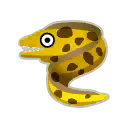
The moray in Animal Crossing Pocket Camp was available throughout the Fall of 2022 and then again in Fall 2024. Maybe it will come back this coming Fall 2025?
What I find funny is that this moray eel is meant to be the Kidako Moray, which is the species present in ACNH, New Leaf, and City Folk, but like. It's a bad take and way too ambiguous. It's lazy - I know you can do better, Nintendo. And I know that it *should* be the Kidako, considering the Kidako is an important food fish in Japan and it makes sense they would continue on with the same species. But. We know that sometimes that isn't true. Nintendo can do whatever it wants, and that means I will, too. LMAO
A yellow-bodied moray eel with brown spots is actually a popular look among morays. The family has 200 species, and of those I found quite a few that could be even better represented by the ACPC sprite than the Kidako. For example, the Freshwater Moray (Gymnothorax polyuranodon) looks much more like the sprite.

Image from fishkeeper.co.uk
The Freshwater Moray is actually a unique species of moray that can survive in fresh, brackish, or saltwater, so the fact that ACPC's moray is found at Saltwater Shores doesn't count this guy out. Its native range is in extremely shallow water from Sri Lanka to the northern coast of Australia. It's thought to be catadromous, meaning that it goes out to sea to spawn. It's the opposite of what salmon do, but seems to be a theme among eels. So, yeah, it's a really good candidate.
But we also have the Spotted Snake Eel (Scuticaria tigrina), also called the Tiger Moray. This one is also shallow water, but only in saltwater throughout the Indo-Pacific to Hawaii and also around the west coast of Mexico to Panama. The spots on this one are more blotchy, but they're big and round and look brown on some individuals, so this one is a candidate for species rep here too.

By zsispeo - Flickr: Scuticaria tigrina, CC BY-SA 2.0
Another candidate could be the Laced or Honeycomb Moray (Gymnothorax favagineus). Its also native to the Indo-Pacific, from the Red Sea to Southern Japan and the Great Barrier Reef.

By jon hanson from london, UK - honeycomb moray eel, CC BY-SA 2.0
And still, we have the Fimbriated Moray (Gymnothorax fimbriatus), another candidate of the Indo-Pacific, from Madagascar to Polynesia, and from south Japan to New Caledonia. As with many morays, they are reef-dwellers and are nocturnal, coming out at night to feed on squid and fish.

Image from scuba.spanglers.com
And the last one I want to mention is the Giant Moray (Gymnothorax javanicus). This species is the largest of the morays in terms of weight, although 10ft/3m is not a small length either. It is also a denizen of the coral reefs throughout the Indo-Pacific from the Red Sea to Hawaii and everything in between, including Japan's southern islands. It is known to cooperatively and mutually hunt with the Roving Coral Grouper. This is a rare inter-species cooperative hunt in which the animals bob their heads at each other to start the hunt. It's pretty incredible. We do, sometimes, see relations like this in other species, like that between coyotes and badgers. In both these relationships, the slender, burrowing partner can flush out hiding prey from its burrow into the waiting maw of their larger, quicker partner.

Moray eels are so cool, but I've covered them so much, I kinda just wanted to do a slide show of just a few really cool members. Head back up to the links to learn more about them and other Anguilliformes.
And there you have it! Fascinating stuff, no?
#moray eels#eel#fish#Animal Crossing Pocket Camp#ACPC#animal crosing#animals#marine biology#science in video games#animal crossing fish explained
13 notes
·
View notes
Text
At a time when marine life is disappearing from the world's oceans, researchers are celebrating the discovery of a new species of coral reef fish in the southern waters of the Great Barrier Reef. Named the Lady Elliot Shrimp Goby, the previously unknown fish was found as part of a University of the Sunshine Coast-led project that is mapping the changing biodiversity on and around Lady Elliot Island, a tiny coral cay at the southern end of the Great Barrier Reef.
Continue Reading.
#great barrier reef#Coral Reefs#Ecology#Oceans#Fish#zoology#science#biology#stem#Animals#Lady Elliot Shrimp Goby#Goby fish
94 notes
·
View notes
Text
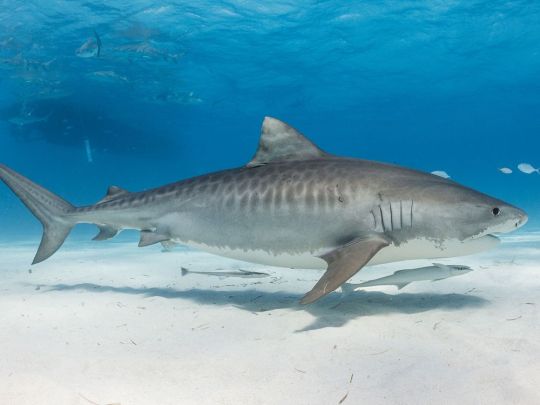
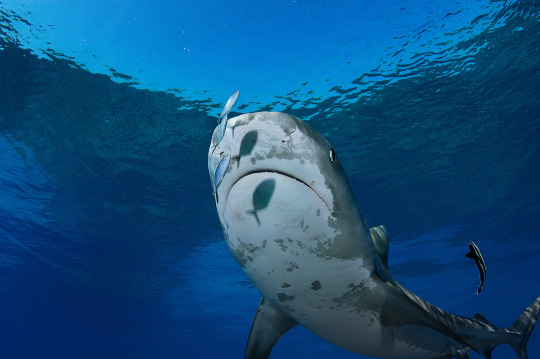
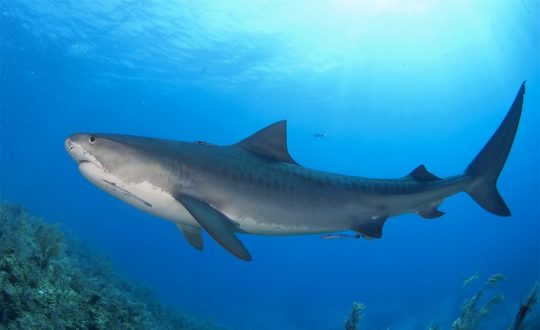
Taming the Tiger Shark
The tiger shark (Galeocerdo cuvier) is a common sight for divers, fishermen, and tourists in the tropical waters of the Atlantic and Pacific oceans. They are often found around sea grass fields or coral reefs, and tend to prefer warm, shallower waters near the coastline or surrounding atolls and islands. The northern end of their range extends up to the northern borders of the United States and China, while their southern range reaches down to Brazil, Madagascar, and the eastern coast of Australia.
While they're slightly smaller than great whites, G. cuvier is still one of the largest carnivores in the ocean. Adults can grow up to 4.7 m (15 ft 5 in) long and weigh between 300 and 900 kg (700 and 2,000 lb). Females tend to be larger than males, but the two sexes are otherwise indistinguishable. Individuals are typically bluish gray or green, with a white or light yellow underbelly; this provides them with camouflage, as fish swimming overhead or below are unable to pick out the shark's silhouette against the dark or light background, respectively.
As an apex predator, G. cuvier has few predators of its own. Juvenile tiger sharks will often fall prey to other sharks, including adults of their own species. Orcas are also occasionally known to prey on tiger sharks, but these occurrences are rare. In their own food chain, G. cuvier has a large appetite and will eat almost anything. Coral reef fish are a common target, though their speed and small size makes them harder to catch. More often tiger sharks will prey on cephalopods, crustaceans, sea snakes, turtles, sea birds, and a host of marine mammals like dolphins, dugongs, sea lions, and young, injured, or dead whales. Inadvertently, tiger sharks will also consume garbage such as bottles tires, earning them the nickname 'The Garbage Can of the Ocean'.
Tiger sharks are primarily active at night. Contrary to other sharks, G. cuvier has excellent eyesight, as well as a keen sense of smell. In addition, tiger sharks have two special sensory organs. The lateral line extends down the length of the body and can detect minute vibrations in the water. Ampullae of Lorenzini are small electroreceptors located on the snout; these detect the weak electrical impulses generated by prey. All these features make it easy for tiger sharks to find a meal, and once located their body shape allows them to put on a burst of speed and make quick turns to catch their target. Most of the time, this hunting practice is done alone, but occasionally groups of tiger sharks will gather to scavenge a large carcass or for the mating season.
Male tiger sharks mate every year, while females only reproduce every three years. Breeding seasons differ based on location; in the Northern Hemisphere mating occurs between March and May, while in the Southern Hemisphere it's between November and January. During this time, dozens or even hundreds of sharks may gather to find mates. Females carry their young for up to 16 months, at which time they give live birth. Tiger sharks are ovoviviparous, meaning that eggs are fertilised and hatch inside the mother; this species is also unique in that they employ a technique called embryotrophy, in which young gestate in sacks which are filled with an embryonic fluid. A single litter of tiger sharks may contain between 10 to 80 pups, and each one may live up to 12 years in the wild.
Conservation status: The IUCN has classified the tiger shark as Near Threatened. While exact numbers are unclear, a great many tiger sharks are killed each year for their skin, fins, and liver. This species also has a reputation for vicious attacks, and while they can be aggressive when threatened, only a handful of shark attacks occur each year.
If you like what I do, consider leaving a tip or buying me a ko-fi!
Photos
Neil Hammerschlag
Brian Skerry
David Snyder
#tiger shark#Carcharhiniformes#Galeocerdonidae#ground sharks#sharks#cartilaginous fish#fish#marine fauna#marine fish#coral reefs#coral reef fish#coasts#coastal fish#atlantic ocean#Pacific Ocean#indian ocean#indo pacific#animal facts#biology#zoology
98 notes
·
View notes
Text
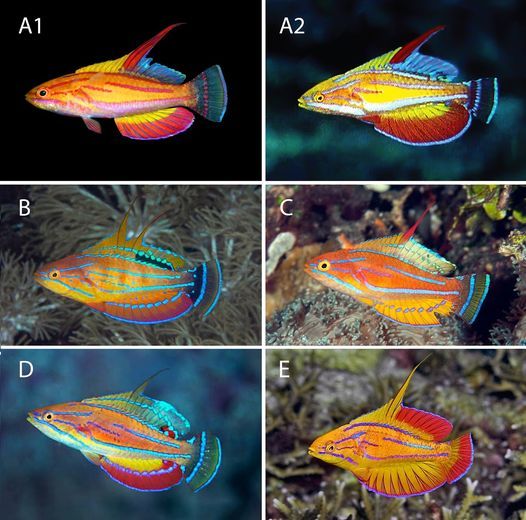
Review of Australian Species of Paracheilinus Fourmanoir (Teleostei: Labridae), with Description of a New Species from the Great Barrier Reef and Coral Sea
#FlasherWrasses
Yi-Kai Tea, Fenton Walsh
Abstract
Australian species of the cirrhilabrin labrid genus Paracheilinus are reviewed. Four species of Paracheilinus are reported from Australian waters: P. amanda, new species, from Flora, Holmes, and Osprey Reefs, Coral Sea, off northeast Queensland, and Harrier Reef, Great Barrier Reef; P. filamentosus from Lizard Island, Great Barrier Reef; P. flavianalis from Evans and Flinders Shoals, Timor Sea, off northeast Darwin, Northern Territory, and Ashmore, Scott, Seringapatam, and Hibernia Reefs in the north-western shelf of Western Australia; and P. nursalim from Flinders Shoal, Timor Sea, off northern Darwin, Northern Territory. Paracheilinus amanda, new species, has previously been confused for P. rubricaudalis from Melanesia, but molecular analysis of mitochondrial COI recovers both species as reciprocally monophyletic lineages, differing from each other by 1–1.2% in genetic distance. They further differ in aspects of live coloration of terminal phase (TP) males. Both species are allopatric and do not overlap in distribution. The new species is described on the basis of six specimens: the holotype and two paratypes from Harrier Reef, Great Barrier Reef, one paratype from Flora Reef, Coral Sea, and from two paratypes collected off Hula in southern Papua New Guinea, along the north-western margin of the Coral Sea. The discovery of P. nursalim in Australia represents a new and significant range extension from previous locality records of West Papua and Ambon Bay. Paracheilinus is rediagnosed, and keys, diagnoses, photographs, and Australian distribution records are presented for all species herein.
Read the paper here:
Review of Australian Species of Paracheilinus Fourmanoir (Teleostei: Labridae), with Description of a New Species from the Great Barrier Reef and Coral Sea (bioone.org)
102 notes
·
View notes